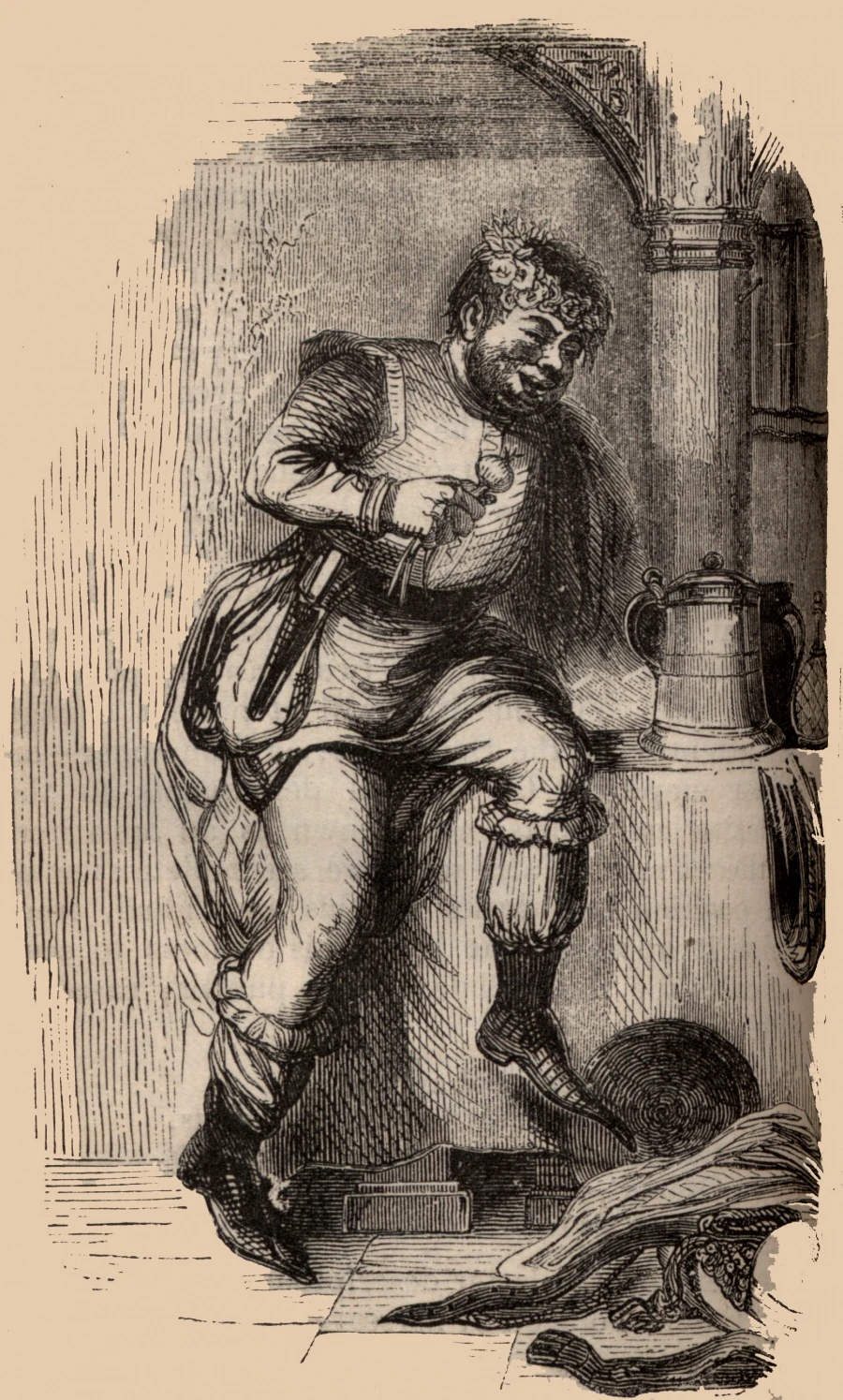The Canterbury Tales by Geoffrey Chaucer follows the journey of a large group of pilgrims. They begin at the Tabard Inn in Southwark, England, and continue on until they reach the cathedral within the city of Canterbury. It opens with a prologue, in which the narrator gives a description of everyone who is participating in the pilgrimage. Following that, each character gets a chance to tell their own tale.
Within the “General Prologue” of The Canterbury Tales, Chaucer describes the character known as The Summoner to be infected with a terrible disease. He is described to be covered in cysts, lumps, infections, and pimples. His face is horribly inflamed, red, and so swollen that he can barely keep his eyes open. His appearance is so terrible that it frightens children. Many scholars have speculated on what exactly ails the man. Some say it is dry scabies, late-stage syphilis, or gutta rosacea. No matter his exact diagnoses, during Medieval England, he most likely would have been said to have leprosy, as this term was unknowingly used to diagnose an incredible amount of diseases due to the limited understanding of illnesses.
Within the “General Prologue” of The Canterbury Tales, Chaucer describes the character known as The Summoner to be infected with a terrible disease. He is described to be covered in cysts, lumps, infections, and pimples. His face is horribly inflamed, red, and so swollen that he can barely keep his eyes open. His appearance is so terrible that it frightens children. Many scholars have speculated on what exactly ails the man. Some say it is dry scabies, late-stage syphilis, or gutta rosacea. No matter his exact diagnoses, during Medieval England, he most likely would have been said to have leprosy, as this term was unknowingly used to diagnose an incredible amount of diseases due to the limited understanding of illnesses.
 |
| Visual representation of The Summoner |
During the Middle Ages, it was commonly believed that when a person did something morally or spiritually wrong, it was reflected on their body in the form of illness or disease. In most instances, the disease was leprosy. In Chaucer’s The Canterbury Tales, The Summoner falls victim to this very belief. He led a very sinful life filled with sodomy, lechery (excessive sexual desire, also known as lustfulness), and simony. Bryon Grigsby best describes the man’s simony by saying, “Instead of searching out immoral people and sending them to either the [church] or [non-religious] authorities, he searches out morally good people and [forces] money out of them or accepts bribes from morally bad people to avoid turning them over to the authorities.” As a summoner, his duty was to bring people who were guilty of spiritual crimes to the ecclesiastical court to be punished. However, he abused his position in order to make money for himself. This, along with the other sins mentioned, was more than enough for The Summoner to be punished by God by becoming infected with a terrible disease.
Sharon Rhodes offers her opinion regarding The Summoner’s disease and sins. She considers leprosy to be an obvious mark on a person that advertises their sins to the world. She explains, “Consequently, . . . Chaucer’s Summoner . . . appear[s] as [a] leper[ ]. The[ ] character[‘s] skin[ ] publicly broadcast[s] their private wickedness, allowing—even forcing—the audience to visualize the effects of sin which would otherwise be unreadable.” Generally, once a person sinned enough for it to be reflected on their skin in the form of a disease, they would make some positive changes in their life in an effort to rid themselves of the illness. However, The Summoner chooses not to make changes to his lifestyle and continues to sin as much as he had before becoming a leper. Rhodes speculates that his pilgrimage to Canterbury is a last-ditch effort to save himself. It was said that in Canterbury, those with leprosy could receive a type of holy water made with a small amount of St. Thomas’ blood, which was believed to cure the disease from those who truly seek forgiveness from God.
Sharon Rhodes offers her opinion regarding The Summoner’s disease and sins. She considers leprosy to be an obvious mark on a person that advertises their sins to the world. She explains, “Consequently, . . . Chaucer’s Summoner . . . appear[s] as [a] leper[ ]. The[ ] character[‘s] skin[ ] publicly broadcast[s] their private wickedness, allowing—even forcing—the audience to visualize the effects of sin which would otherwise be unreadable.” Generally, once a person sinned enough for it to be reflected on their skin in the form of a disease, they would make some positive changes in their life in an effort to rid themselves of the illness. However, The Summoner chooses not to make changes to his lifestyle and continues to sin as much as he had before becoming a leper. Rhodes speculates that his pilgrimage to Canterbury is a last-ditch effort to save himself. It was said that in Canterbury, those with leprosy could receive a type of holy water made with a small amount of St. Thomas’ blood, which was believed to cure the disease from those who truly seek forgiveness from God.
No comments:
Post a Comment